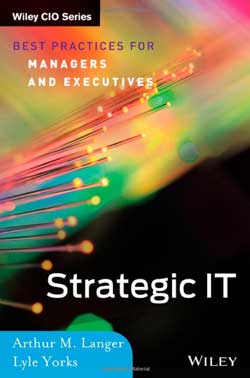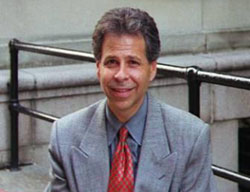Filed Under > Research/Publications
Getting With the Program - and Going Beyond It
In a new book about information technology management, TC's Lyle Yorks and Arthur Langer argue for more strategic leadership throughout organizations
In the “C-suite” of top executives, no one is subjected to more second-guessing than the Chief Information Officer. Organizations know that technology, when used rightly, is critical to their success. But often they must choose between disruptive innovation and the need to make existing activities more effective. It falls to the CIO to navigate an ever-expanding landscape of potential solutions, recommend the right choices and implement them within the organization.
In their new book, Strategic IT: Best Practices for Managers and Executives (Wiley, 2013), Lyle Yorks, Associate Professor of Adult and Continuing Education, and Arthur M. Langer, who serves on the faculty of TC and Columbia Business School, offer best practices drawn from research, case studies of six widely praised CIOs, and the authors’ own long experience in organizational studies and executive education.
“Technology is a strategic driver, not just a support function,” Yorks says. But many CIOs still “focus on the technology as opposed to addressing the broader institutional strategy,” while some organizations still make the mistake of hiring “tech people” rather than those with a broader strategic mindset.
Strategic IT urges CIOs to “focus on the process of influencing and building commitment,” Yorks says – work that requires a deep understanding of an organization’s business model or mission, as well as an appreciation for the political savvy required in the decision-making environment.
The book’s case studies, which include companies in energy, finance, pharmaceuticals and real estate, provide lessons not just for CIOs but for organizations. For instance, the authors believe it’s crucial that the CIO report directly to the CEO and be present at key board meetings. Any other arrangement would disempower the CIO and send a damaging signal about the organization’s grasp of technology.
Yorks says the CIO should do more than just run IT. In fact, the position is “increasingly becoming the stepping stone to the Chief Operating Officer role -- it’s become core to the operation of the organization.”
Strategic IT is a book for practitioners, but Yorks says it echoes at least two key insights in organizational studies that speak to management everywhere. One is the recognition that technology “needs to be a major lever of strategy in every field, including education.”
The other is the need for leadership that goes beyond an emphasis on expertise in a narrowly defined area. In a world of change and complexity, Yorks says, “we’re talking about the challenge of thinking strategically. The expert mindset is critical, but you have to recognize how it gets in the way of the ability to assess trends, come up with new insights, and foster the conversations that need to take place in the organization. At this level, you add value when you help shape and change the
Published Monday, Oct. 14, 2013


